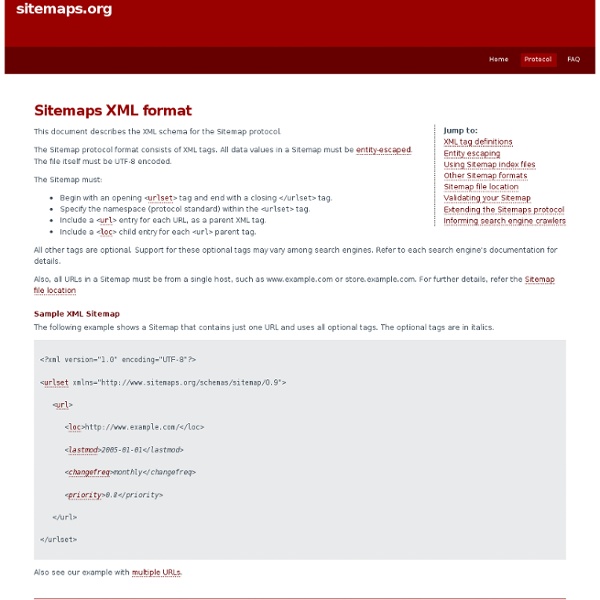ChronoSIDORE : explorons les données d’ISIDORE avec SPARQL #2 – sp.Blog, le blog de Stéphane Pouyllau
Posté le 31 août 2012 ChronoSIDORE n’est pas le nom d’une nouvelle espèce de dinosaures, c’est le nom d’une application web qui utilise les ressources d’Isidore. ChronoSIDORE est donc un petit « mashup » que j’ai programmé pendant mes congés d’été. L’idée est double, poursuivre l’exploration concrète des possibilités d’un outil comme Isidore et donner des idées à d’autres personnes, en particulier dans le monde des bibliothèques et de la documentation, pour développer d’autres mashups s’appuyant soit sur l’API d’Isidore soit sur son SPARQL endpoint. Que propose-t-il ? ChronoSIDORE, accessible sur www.stephanepouyllau.org/labs/isidore/chronosidore, propose une autre façon de « voir » les ressources d’Isidore ; différente des vues traditionnelles en « pages de résultats » comme cela est le cas dans les bases de données bibliographiques ou catalogues. Comment fonctionne-t-il ? ChonoSIDORE réalise en fait plusieurs tâches : Quelques limites Stéphane.
sitemaps.org - Home
Mobilize.js
Introduction à RDFa
Résumé Le Web actuel est conçu essentiellement pour une consommation humaine. Et même lorsque des données interprétables font leur apparition sur le Web, elles sont typiquement distribuées dans un fichier séparé, avec un format séparé et une correspondance très limitée entre les versions homme et machine. En conséquence, les navigateurs Web ne peuvent fournir qu'une aide minimale aux humains pour l'analyse et le traitement des données web : les navigateurs voient seulement l'information de présentation. Ce document n'est qu'une introduction à RDFa. Statut de ce document Cette section décrit le statut de ce document au moment de sa publication. Ce document est une note de groupe de travail produite conjointement par le groupe de travail Semantic Web Deployment [SWD-WG] et le groupe de travail XHTML 2 [XHTML2-WG] du W3C. La publication en tant que note de groupe de travail n'implique pas une approbation par les membres du W3C. 1 Introduction 1.1 HTML contre XHTML 2 Assaisonner XHTML ... ...
About Sitemaps - Webmaster Tools Help
What is a sitemap? A sitemap is a file where you can list the web pages of your site to tell Google and other search engines about the organization of your site content. Search engine web crawlers like Googlebot read this file to more intelligently crawl your site. Also, your sitemap can provide valuable metadata associated with the pages you list in that sitemap: Metadata is information about a webpage, such as when the page was last updated, how often the page is changed, and the importance of the page relative to other URLs in the site. You can use a sitemap to provide Google with metadata about specific types of content on your pages, including video, image, and mobile content. A sitemap video entry can specify the video running time, category, and age appropriateness rating. Do I need a sitemap? If your site’s pages are properly linked, our web crawlers can usually discover most of your site. Your site is really large.
Inside AdWords
RDFa
Sitemaps
The Sitemaps protocol allows a webmaster to inform search engines about URLs on a website that are available for crawling. A Sitemap is an XML file that lists the URLs for a site. It allows webmasters to include additional information about each URL: when it was last updated, how often it changes, and how important it is in relation to other URLs in the site. Sitemaps are particularly beneficial on websites where: Search Engine Indexing Sitemaps supplement and do not replace the existing crawl-based mechanisms that search engines already use to discover URLs. Google - Webmaster Support on Sitemaps: "Google doesn't guarantee that we'll crawl or index all of your URLs. History[edit] Google first introduced Sitemaps 0.84 in June 2005 so web developers could publish lists of links from across their sites. In April 2007, Ask.com and IBM announced support for Sitemaps. The Sitemaps protocol is based on ideas[2] from "Crawler-friendly Web Servers".[3] File format[edit] <? Element definitions[edit]
What is the Structured Web?
The structured Web is object-level data within Internet documents and databases that can be extracted, converted from available forms, represented in standard ways, shared, re-purposed, combined, viewed, analyzed and qualified without respect to originating form or provenance. Over the past few months I have increasingly been writing about and referring to the structured Web. I have done so purposefully, but, so far, with little background or explication. With the inauguration of this occasional series, I hope to bring more color and depth to this topic [1]. Literally, over the past year, I have been learning and documenting on AI3 my attempts to understand the basis, concepts and tools of the emerging semantic Web. Confusing Terminology Surrounding Obvious Change Some Web pundits have embraced a versioning terminology of Web 2.0 and Web 3.0 to describe one such world view. This initial start to the Web — today now referred to by some as ‘Web 1.0′ — can be squarely timed to 1993-1994.
XML Sitemap Generator - creates Free Google site-maps online
Welcome to the Bibliographic Ontology Website | The Bibliographic Ontology
Sitemap XML: The QuickStart Guide to Site Maps



